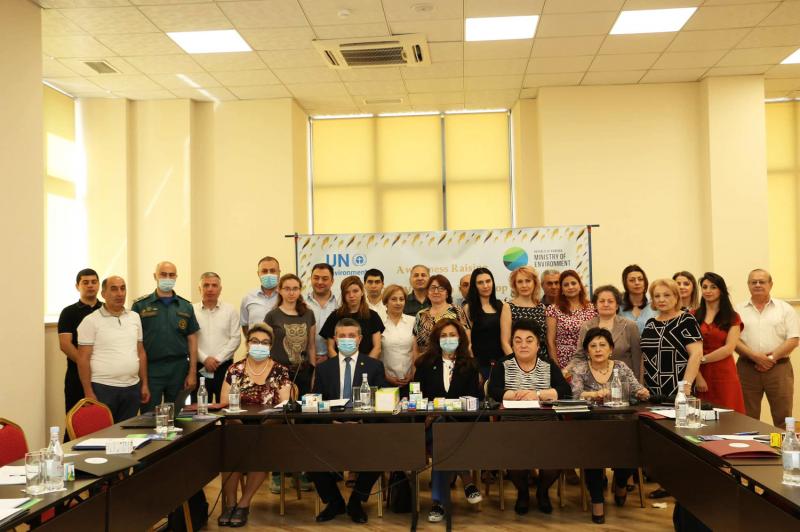The event was organized within the framework of "Building Capacity in Armenia to Support the Phase-out of Mercury Additive Products" project implemented by the Ministry of Environment in colloboration with UNEP.
The event was attended by the officers of the National Academy of Sciences, non-governmental organizations and other interested institutions.
Mrs. Mazmanyan, Deputy Minister of Environment, said a welcome speech, emphasizing the protection of human health and the environment from the anthropogenic impact of mercury.
In 2017, the Republic of Armenia ratified the Minamata Convention on Mercury, which aims to protect human health and the environment from anthropogenic emissions and releases of mercury and mercury compounds. According to the provisions of the Convention, each Party is obliged to take measures for phasing out mercury and mercury additive products after 2020, environmentally sound storage of mercury compounds and disposing mercury-containing wastes in an environmentally sound manner.
Mrs. Aleksandryan, Focal Point to the Minamata Convention on Mercury, said that in the project scopes it is envisaged to develop a strategy for the effective collection, storage, transportation and processing of mercury-containing products.
Mr. Azizyan, Acting Director of “Hydrometeorology and Monitoring Center” of the Ministry of Environment highlighted mercury monitoring in the environment, as biosphere pollution with mercury and mercury compounds is conditioned by their relatively high volatility, external environmental stability, solubility in atmospheric precipitations as well with the capability to accumulate in soil and in green plantations.
In order to phase out mercury-vapor lamps, the flows of these products have been determined, including the import, distribution, use, and the volumes of waste generated annually.
Knarik Grigoryan, Expert on Chemical Safety of “Armenian Women for Health and Healthy Environment” NGO, presented the results of the research conducted in household lamp stores in 13 cities of 9 regions in Armenia. She noted that there were three main types of light bulbs in specialized lamp shops, building materials stores: mercury-containing fluorescent lamps, mercury-free incandescent lamps, and state-of-the-art (LED) lamps.
The participants of the workshop were introduced to the advantages of various types of lamps providing the same lighting, noting that incandescent lamps heat more than they emit light, while fluorescent lamps consume about 3.3 times less energy, providing the same lighting, but are dangerous because they will break or in case of inappropriate usage, they can release mercury and cause health problems. She stressed that LED bulbs use 6.6 times less energy than incandescent bulbs and are safer as they do not contain mercury.







